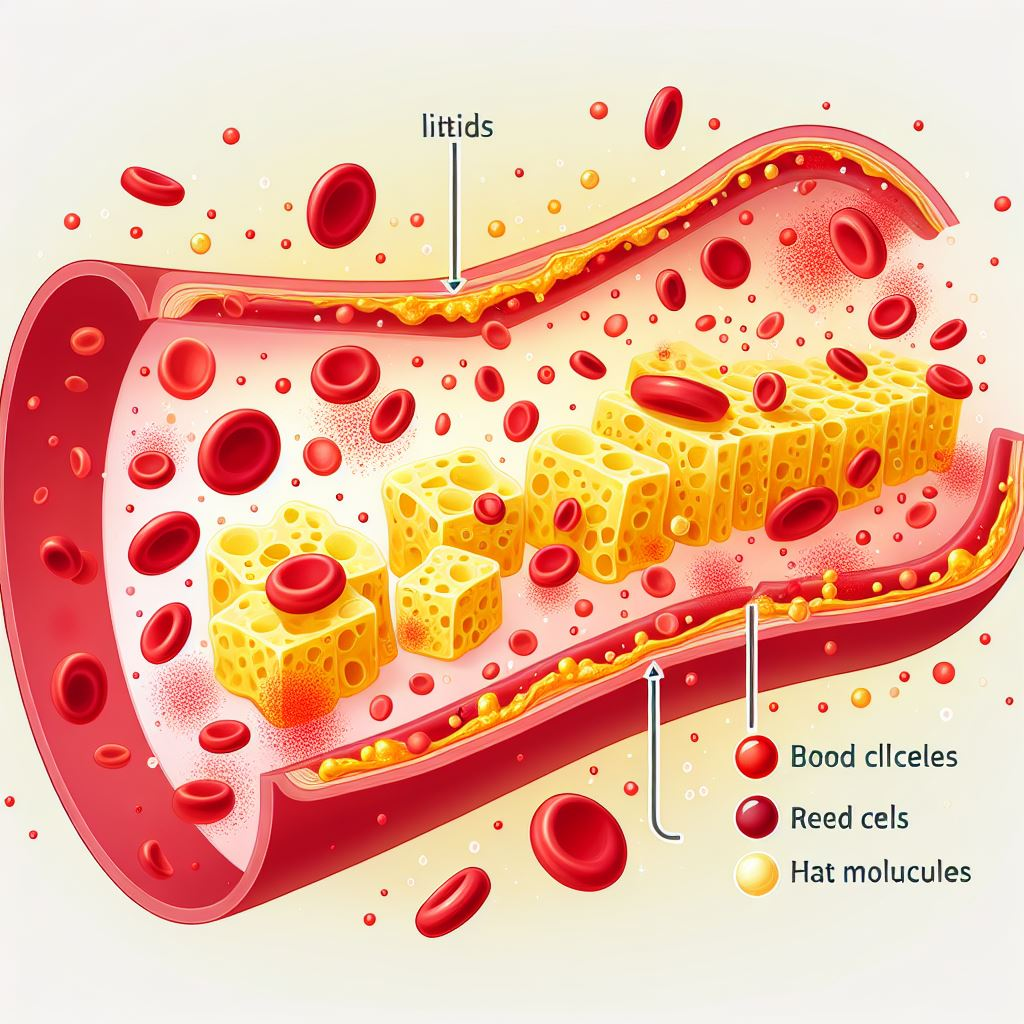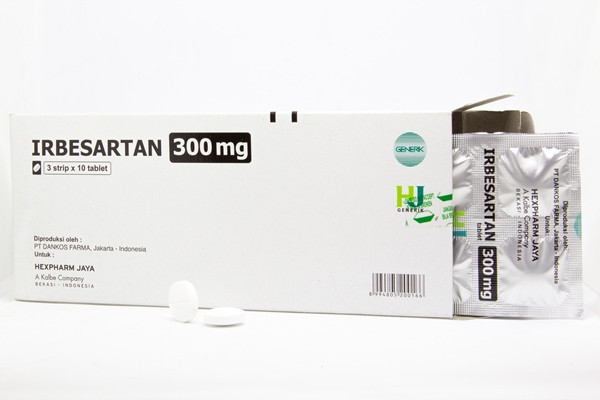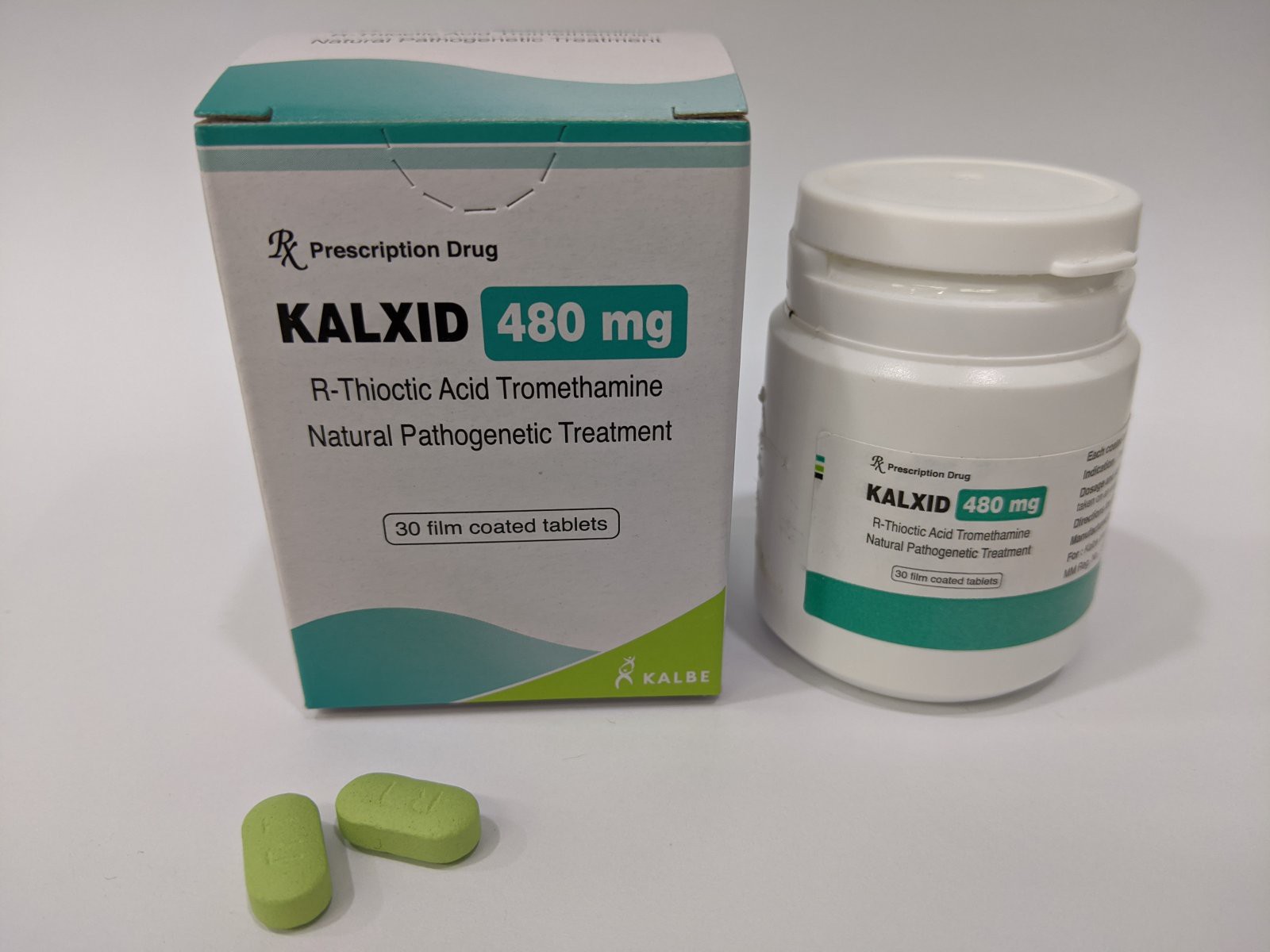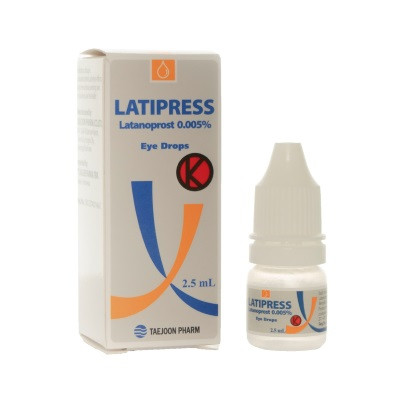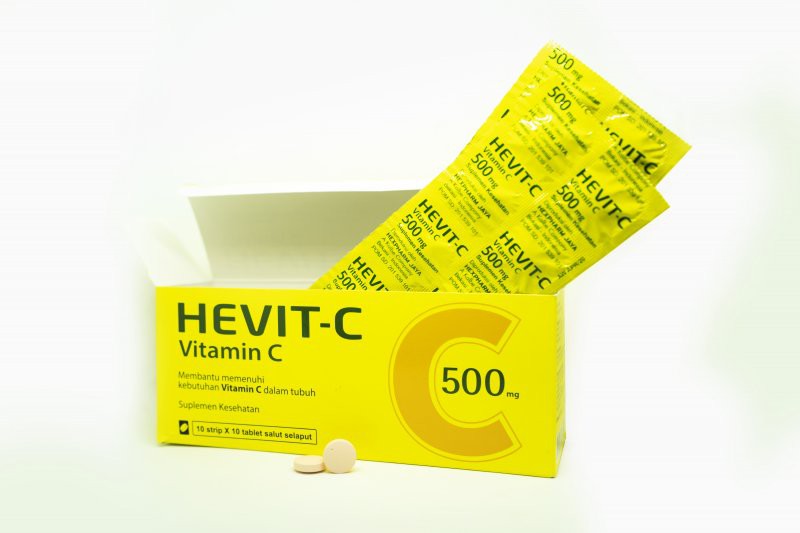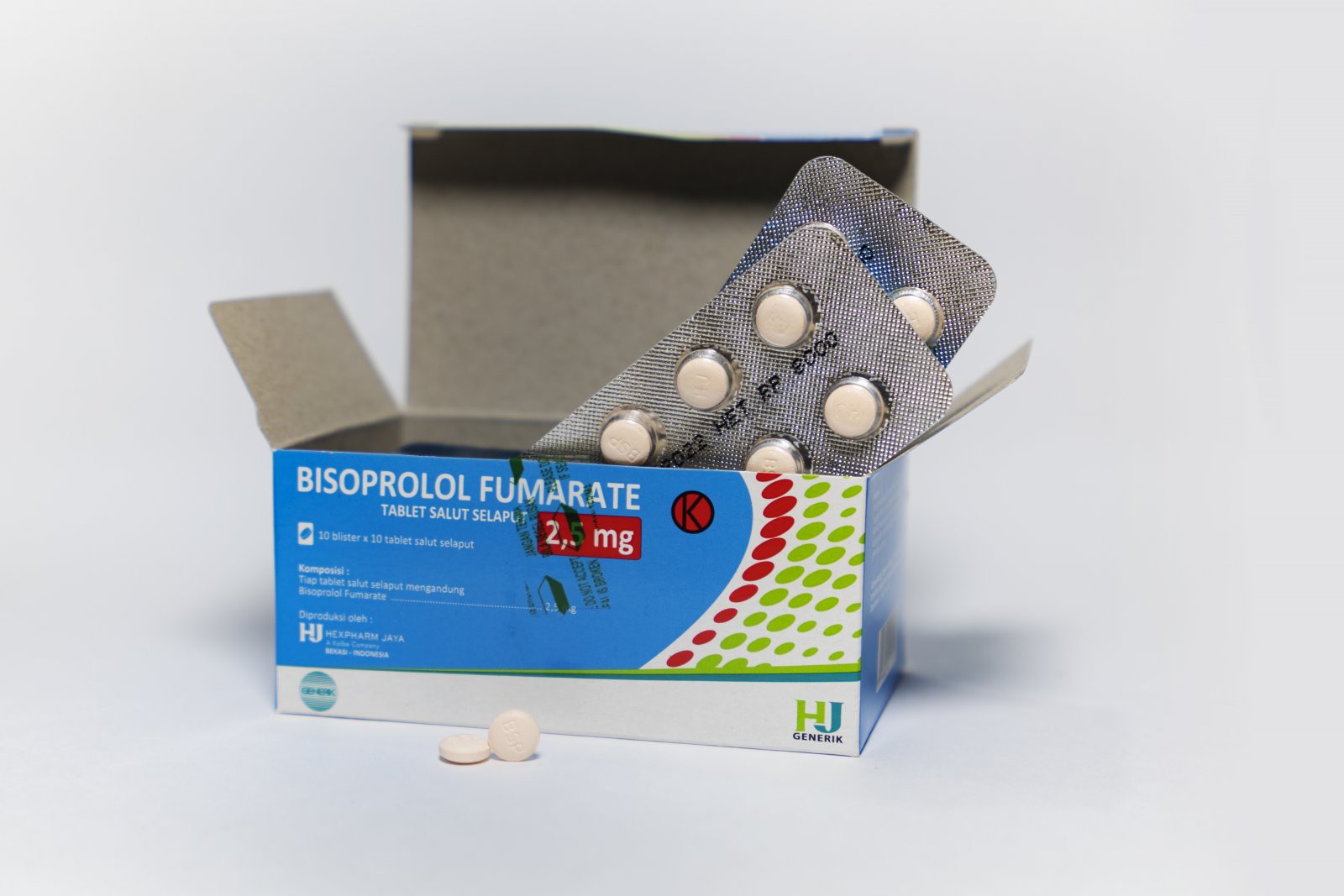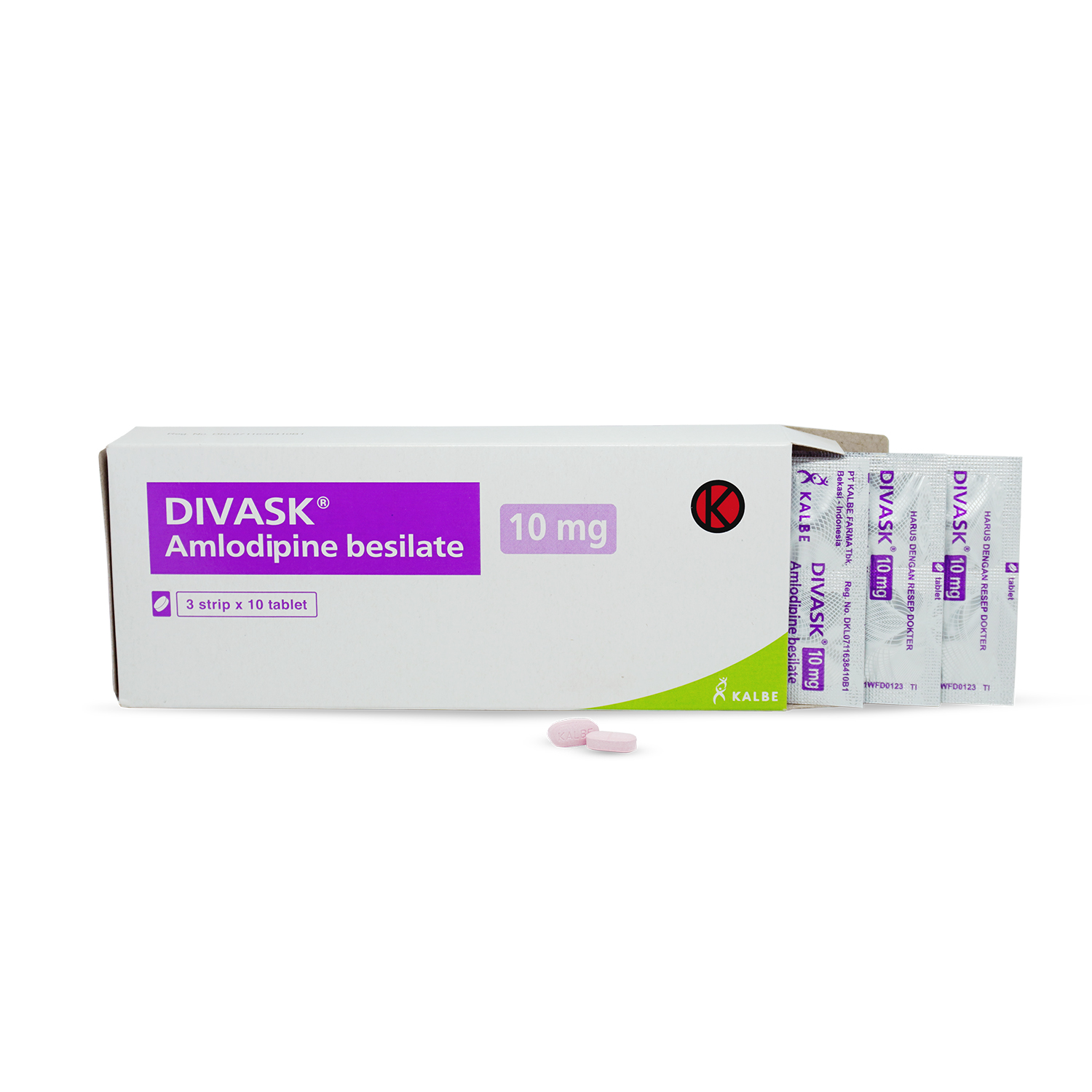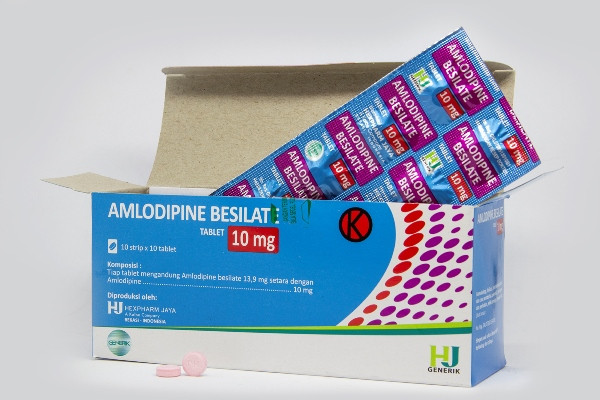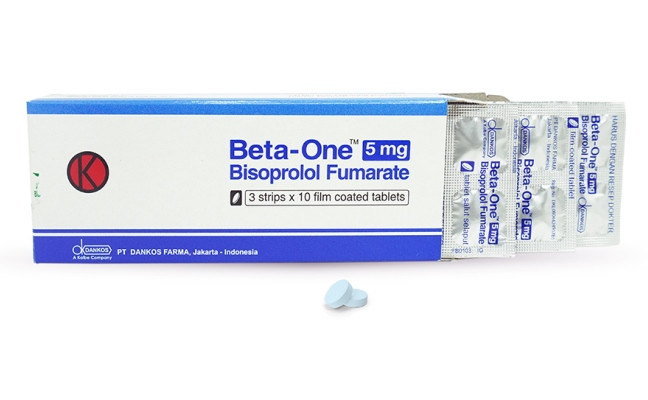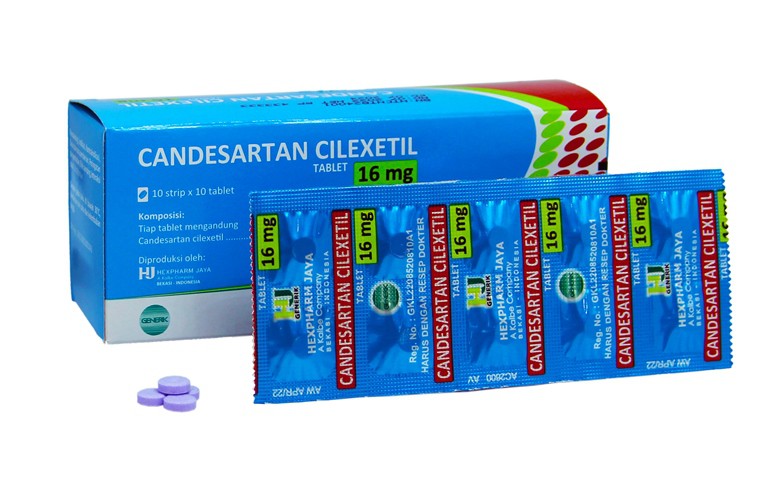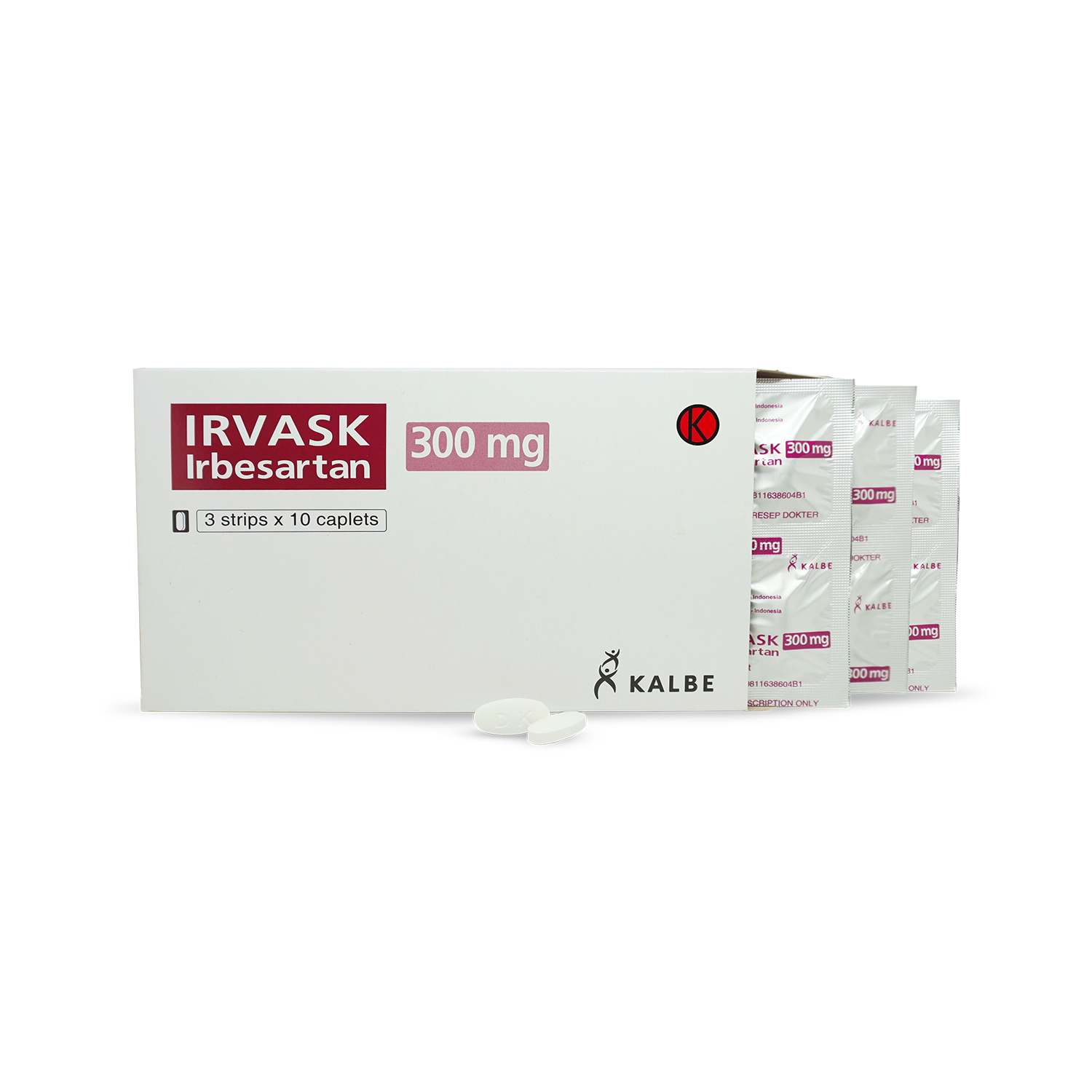
Hipertensi masih merupakan penyebab utama kematian di dunia yang menjadi masalah global. Hipertensi terjadi pada satu dari tiga orang dewasa di seluruh dunia. Saat ini, muncul konsep baru bahwa proses terjadinya hipertensi telah dimulai sejak tahap awal kehidupan seseorang.
Konsep ini, berdasarkan pengamatan bahwa janin yang saat perkembangannya terpapar dengan kondisi buruk selama di dalam rahim ternyata meningkatkan risiko penyakit kronis yang terjadi dikemudian hari. Konsep ini disebut sebagai "asal mula perkembangan kesehatan dan penyakit (developmental origins of health and disease/DOHaD).”
Secara khusus, konsep DOHaD, selain menentukan risiko awal terhadap perkembangan hipertensi, juga menawarkan cara baru untuk mencegah hipertensi melalui terapi pemrograman ulang (reprogramming therapy). Dengan beralih dari terapi pada masa dewasa ke terapi pada kehidupan awal sebelum timbulnya penyakit, diharapkan dapat membalikkan proses-proses yang akan menyebabkan hipertensi. Dengan demikian, konsep DOHaD ini memunculkan suatu hipotesis baru bahwa terapi pemrograman ulang dini berpotensi sebagai strategi inovatif dalam mengurangi beban hipertensi secara global.
Semakin banyak bukti menunjukkan bahwa stres oksidatif terlibat dalam asal mula perkembangan (DOHaD) penyakit hipertensi. Stres oksidatif disebabkan oleh ketidakseimbangan antara radikal bebas (reactive oxygen species/ROS dan reactive nitrogen species/RNS) dan antioksidan. Studi eksperimental menunjukkan bahwa pada kondisi stres oksidatif terjadi ketidakseimbangan antara produksi ROS dan NO/nitric oxide (NO diketahui berperan sebagai antioksidan pada tingkat seluler dan bersifat sebagai vasodilator). Kondisi inilah yang menimbulkan reaksi oksidasi pada organ-organ utama yang dikendalikan oleh tekanan darah seperti otak, ginjal, jantung, dan pembuluh darah, yang mendasari terjadinya hipertensi. Sebaliknya, terapi antioksidan diketahui dapat menurunkan stres oksidatif dan tekanan darah.
Suatu tinjauan baru-baru ini oleh Tain dan Hsu yang dipublikasikan dalam jurnal Antioxidants tahun 2022, mengevaluasi bukti-bukti ilmiah mengenai interaksi antara stres oksidatif dan proses perkembangan hipertensi. Tinjauan ini membahas peranan stres oksidatif terhadap asal mula perkembangan hipertensi dan potensi terapi antioksidan sebagai strategi pencegahan baru penyakit hipertensi.
Dalam kondisi fisiologis, pemeliharaan tekanan darah normal memerlukan interaksi terkoordinasi dari beberapa sistem, yaitu sistem renin-angiotensin (RAS), peptida natriuretik, ekskresi natrium, endotelium, dan sistem saraf simpatik. Stres oksidatif tidak hanya menyebabkan disfungsi pada organ yang dikendalikan oleh tekanan darah dan remodelling akibat kerusakan oksidatif, tetapi juga merusak sistem regulasi yang terkoordinasi tersebut, sehingga menyebabkan hipertensi.
Antioksidan sebagai Strategi Pemrograman Ulang (reprogramming therapy) Hipertensi
Berdasarkan pemahaman mengenai konsep “asal mula perkembangan kesehatan dan penyakit (developmental origins of health and disease/DOHaD).” Pendekatan terapeutik dapat dimulai lebih awal, bahkan sebelum hipertensi terjadi, yang disebut dengan pemrograman ulang atau reprogramming therapy. Antioksidan diketahui dapat meningkatkan fungsi endotel, menormalisasi remodelling vaskular, dan mengurangi kekakuan arteri. Berdasarkan fakta bahwa stres oksidatif memainkan peran penting dalam asal mula perkembangan hipertensi, terapi antioksidan dapat dipertimbangkan sebagai strategi pemrograman ulang untuk mencegah terjadinya hipertensi di masa depan.
Ada dua kelompok antioksidan, yaitu antioksidan enzimatik dan non-enzimatik. Antioksidan enzimatik yaitu superoksida dismutase (SOD), glutation peroksidase (GPx), dan katalase. Antioksidan non-enzimatik diklasifikasikan sebagai antioksidan alami dan sintetik, yang dapat bersifat endogen dan eksogen. Contoh antioksidan alami non-enzimatik adalah karotenoid, flavonoid, polifenol, asam amino, melatonin, dan vitamin A, C, dan E. Contoh antioksidan sintetik non-enzimatik adalah N-acetylcysteine (NAC). Beberapa antioksidan alami seperti asam amino, vitamin, melatonin, dan resveratrol (polifenol) telah menunjukkan manfaat untuk pencegahan hipertensi.
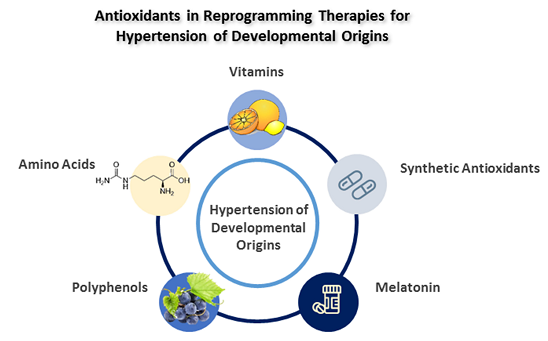
Hasil studi klinis telah menunjukkan adanya kaitan antara status antioksidan pasien dan hipertensi. Kadar vitamin C plasma, misalnya, berbanding terbalik dengan tekanan darah, dan kapasitas antioksidan tersirkulasi yang menurun pada hipertensi. Penurunan aktivitas dan kadar enzim antioksidan plasma, termasuk SOD, glutation peroksidase, dan katalase juga dilaporkan pada pasien dengan hipertensi esensial. Pasien hipertensi menunjukkan kadar H2O2 (hidrogen peroksida/radikal bebas) plasma yang lebih tinggi, peningkatan penanda stres oksidatif dalam plasma dan urin, yaitu zat reaktif asam tiobarbiturat, oxLDL (oxidized low-density lipoprotein/lipoprotein densitas rendah teroksidasi), dan 8 isoprostane, dibandingkan dengan individu normotensif. Dalam studi Alpha-Tocopherol, Beta Carotene Cancer Prevention, suatu analisis kohort prospektif selama 30 tahun, ditemukan bahwa kadar a-tocopherol serum awal yang lebih tinggi dikaitkan dengan penurunan risiko penyakit kardiovaskular dan kematian secara keseluruhan. Selain itu, dalam sebuah survei pemeriksaan kesehatan dan gizi nasional dari tahun 2007-2014 oleh Li, dkk. menunjukkan bahwa asupan alfa karoten, beta karoten, beta cryptoxanthin, lycopene, dan lutein yang lebih tinggi dikaitkan dengan risiko hipertensi yang lebih rendah.
Meskipun penelitian klinis lebih lanjut masih diperlukan, namun manfaat klinis dari antioksidan dalam mencegah hipertensi tampaknya cukup menjanjikan.
Kesimpulan:
Saat ini muncul konsep baru mengenai “asal mula perkembangan kesehatan dan penyakit (developmental origins of health and disease/DOHaD) hipertensi.” Konsep ini memberikan pemahaman bahwa proses terjadinya hipertensi telah dimulai sejak tahap awal kehidupan seseorang, bahkan sebelum hipertensi tersebut terjadi. Bukti-bukti telah menunjukkan bahwa stres oksidatif terlibat dalam patogenesis atau asal mula perkembangan penyakit hipertensi. Oleh karena itu, melalui peranannya dalam menangkal radikal bebas, antioksidan dinilai dapat mencegah terjadinya hipertensi di masa yang akan datang. Pendekatan terapeutik antioksidan ini bahkan dapat dimulai lebih awal, sebelum hipertensi terjadi, yang disebut dengan terapi pemrograman ulang atau reprogramming therapy. Dengan kata lain, terapi antioksidan berpotensi dan mejanjikan digunakan sebagai strategi pemrograman ulang untuk mencegah hipertensi di masa depan.
Gambar: Ilustrasi (Freepik)
Referensi:
1. Tain YL, Hsu CN. Oxidative Stress-Induced Hypertension of Developmental Origins: Preventive Aspects of Antioxidant Therapy. Antioxidants (Basel). 2022;11(3):511.
2. Griendling KK, Camargo LL, Rios FJ, Alves-Lopes R, Montezano AC, Touyz RM. Oxidative Stress and Hypertension. Circ Res. 2021;128(7):993-1020.



